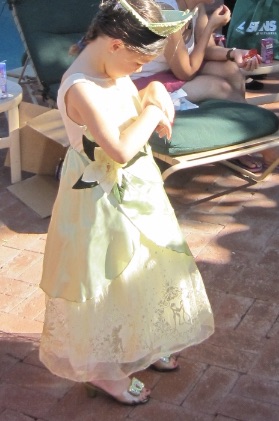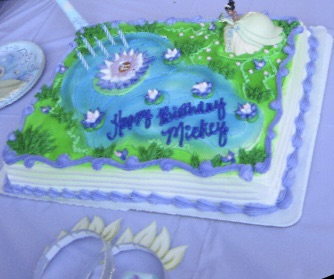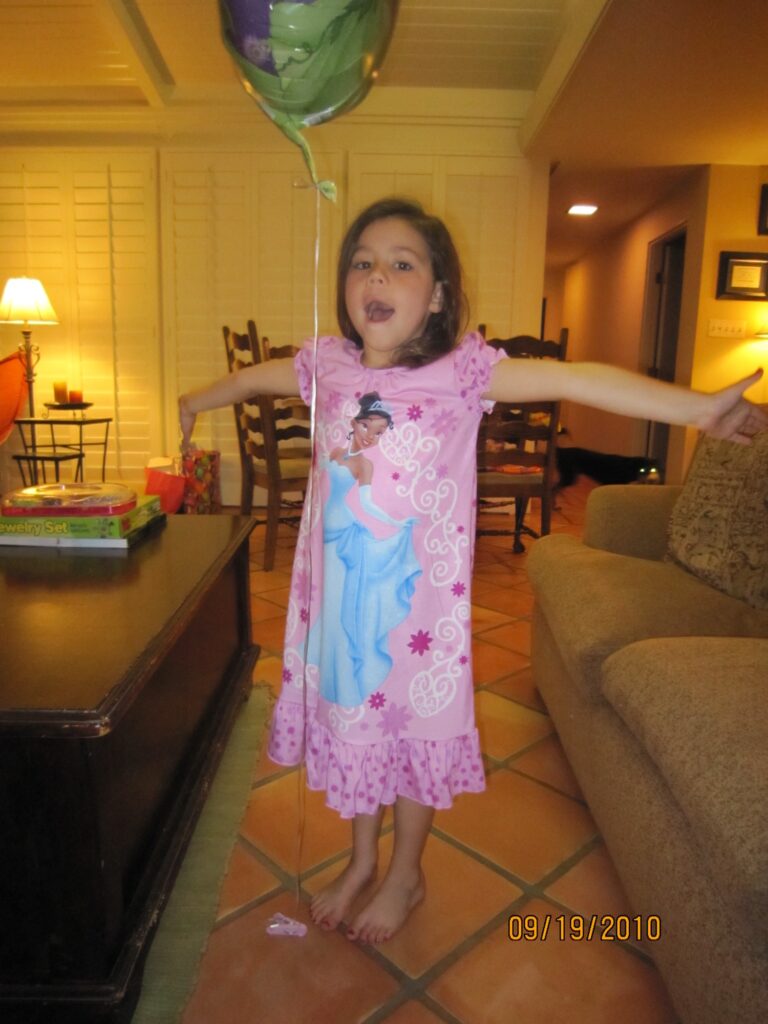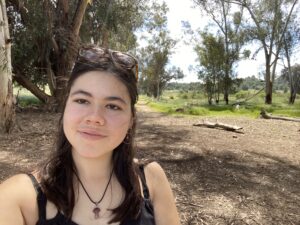When I was little my favorite movie was The Princess and the Frog. I didn’t understand everything that was going on in the movie as a little kid, but the visuals and the music piqued my interest. I liked the atmosphere set up in the beginning of the movie with young Tiana and young Charlotte (Tiana’s best friend) listening to Tiana’s mom read princess stories in Charlotte’s pink princess themed bedroom with lots of dresses. I thought it was so funny when Charlotte dressed the cat up as a frog and threw him on the ceiling, and Tiana’s mother told them to stop tormenting the kitty. I was completely captivated watching Tiana and Prince Naveen row down the bayou as frogs with Louis the alligator playing the trumpet and the scene where Ray the firefly sings about the evening star he’s in love with, Evangeline.
When I was little, I was diagnosed with autism because I had trouble communicating and socializing. I didn’t understand many social situations and I didn’t really communicate with others my age. So I processed everything in a visual way. I also didn’t understand many social situations and had to be told explicitly what was happening in a movie. If there was a villain on screen and there was even ominous music playing in the background, my mom would have to explain that they were evil. While I didn’t understand all of Tiana’s struggles or how evil Dr. Facilier was, I loved the music and animation so much. I can remember how much I loved watching Dr. Facilier dance around and practice voodoo in his song “Friends on the Other Side,” and the scene where Tiana twirls about and fantasizes about her new restaurant in the song “Almost There.”
Because of my autism, I enjoyed repetition. I liked when things were predictable and familiar. In the summer of 2010 when I was four, going on five, I watched Princess and the Frog at least a dozen times (I’m not kidding). I loved going on the walk or drive to Blockbuster and renting the DVD for it along with and maybe buying a gumball with some money that I took from my dad’s change compartment in his pickup truck. Another thing that was part of my autism was that I often didn’t communicate what I was thinking or what I wanted. So, when I told my parents that I wanted a Princess and the Frog themed birthday party, they were so excited. I was excited as well, once I figured out when my birthday was and the fact that I got to look forward to it after the summer. I was asserting what I wanted, and it was the dawn of a new era. While watching The Princess and the Frog a zillion times wasn’t the only reason I learned to communicate my hopes and desires (I was also doing summer social thinking activities geared towards autistic youth), it played a huge role in my early childhood years and my mom was amazed when I told her about my birthday wishes. I think that the movie inspired me to put my newly acquired social skills to use.

I had a blast at my Tiana themed birthday party, and I got a cake with a Princess Tiana topper with her wearing a green dress and kissing the frog. My parents went all out with green decorations with Tiana on them and my classmates and my parents’ friends brought me gifts that went with the theme. I got a pink nightgown with Tiana on it and a stuffed animal that was Tiana in frog form. My favorite gift that I got was the iconic green dress Tiana wore in the movie when she changed back into a human. I wore my Tiana dress for Halloween that year when I went trick-or-treating with some of my classmates.

As I got older, there were some more things that I got to understand and appreciate about The Princess and the Frog. I got to appreciate the plot of the story more. I thought it was really beautiful how Tiana worked with what she had to achieve her dream in the face of adversity. Even though she grew up poor, she held onto her dream to open her own restaurant called Tiana’s Place. And when the building for her restaurant was bought out from under her, she still worked hard to manifest her dream even when it felt hopeless. I now appreciate that even after she married Prince Naveen, she established her restaurant. I learned that even princesses get to run restaurants if they want to.

I also appreciated that the character of Tiana was left-handed, like the actress who did her voice, which I thought was really cool because I’m also left-handed. As I got to be a teenager, I also liked how supportive Charlotte was when Tiana married Prince Naveen instead of her. I liked how they portrayed a positive female friendship without pitting them against each other, even though they came from different backgrounds and had different values in life.
On a larger scale, it was a historical moment and milestone in the history of Disney movies for Tiana to be the first Black Disney princess. I didn’t really think of Tiana’s race as a huge part of the movie when I was younger as a biracial girl with light skin, but as I got older, I understood the importance of positive Black representation and what it means for young kids. Black girls watching the movie could feel represented and know that they can be princesses too, and kids who aren’t Black can be exposed to different stories of people who come from different backgrounds from theirs. I think people can also enjoy and relate to characters no matter what race they are, and people of all races can enjoy watching Tiana’s story. Of course, maybe kids aren’t thinking with those exact words or on a large scale about representation, but I think we learn subliminal messages from movies as kids and as we get older, we have actual words for the lessons and values we gather from the films we watch.
I haven’t decided what my favorite film is now, but Princess and the Frog is a movie that I will forever cherish. Overall, it’s a movie that has had a big impact on my early childhood, and I still appreciate it now that I’m older.
